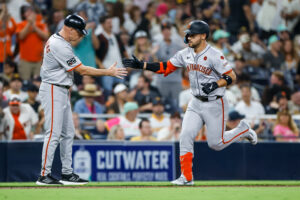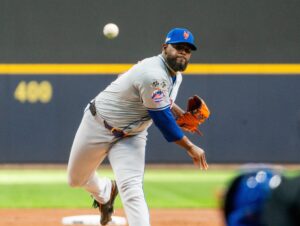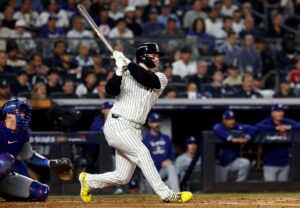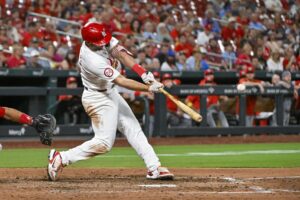Fergie Jenkins is the pride of Chatham, Ontario. The 78-year old Canadian has a bronze plaque in the Baseball Hall of Fame for his pitching. Next season, Wrigley Field will look a little different next year as the Chicago Cubs announced plans to create a statue to honor the Hall of Famer. Chicago company, the Fine Art Studio of Rotblatt-Amrany, will produce Jenkins’ statue. It’s the same company who made Michael Jordan’s iconic statue outside of the United Center.
“Meet Me At The Fergie Statue!” pic.twitter.com/IsybfVJGT7
— Fergie Jenkins (@fergieajenkins) April 6, 2021
The sculpture could be unveiled as early as 2022. Jenkins statue will be joined by Ernie Banks, Billy Williams, Ron Santo, and Harry Caray, all of whom are erected outside of Wrigley Field. Although, this is just more than a statue outside one of baseball’s most iconic ballpark. Jenkins statue comes at the right time and for good reasons.
Jenkins had other great seasons, but 1971 was his best. One that was filled with spectacular moments and history being made.
1971 Season
Fergie Jenkins vs. Bob Gibson
April 6, 1971, marked the 50th anniversary of Jenkins’ Opening Day duel against another fellow Hall of Famer in Bob Gibson. When both pitchers squared off, Gibson was coming off two National League Cy Young Awards of the previous three seasons. The St. Louis Cardinals legend also won the NL MVP Award in 1968-commonly known as the Year of the Pitcher-especially with his 1.12 ERA.
For Jenkins, he made 11 Opening Day starts in his career, going up against Hall of Fame pitchers, including Steve Carlton and Jim Palmer. The right-hander had a streak of four consecutive years with 20 or more wins. Plus, he would finish in the top-three in NL Cy Young Award voting. Jenkins’s previous efforts continued to cement his legacy on Opening Day, pitching the complete game against St. Louis.
The Summer of 1971
The pitching duel between Gibson and Jenkins was just a warm-up. Jenkins’s next challenge was to go up against another lethal pitcher all season long. In 1971, both the Cubs and New York Mets played in the NL East. However, it wasn’t about the division race, but rather for fans in Chicago and New York, all eyes were on Jenkins and Tom Seaver.
These numbers are uncanny since it was the era of Jenkins, Seaver, Gibson, and Carlton. Only ten pitchers topped 280 innings that season. Jenkin’s 325 innings was third behind Mickey Lolich and Wilbur Wood. Although, his 30 complete games led the majors. Seaver was extraordinary that season, but in one department, Jenkins was the better hitter.
Another difference was batting and Jenkins’ bat was a significant factor. What’s even more impressive is that Jenkins posted a .478 slugging percentage to go with his six home runs and 2o RBI. As for Seaver, he wasn’t a bad hitter, but his .196 batting average was no match for Jenkins’ .243 average. Of his six home runs, two flipped the score in the Cub’s favor, while three extended leads and one broke time. All of those home runs came in a complete game and those complete games might have made a difference for Jenkins in his Cy Young campaign.
Among pitchers, his 28 hits led the NL, and his 20 RBIs led pitchers across the majors. The right-hander threw 30 complete games in his 39 starts, finishing the season with a 24-13 record. He walked 37 batters with 263 strikeouts across 325 innings. He played in the All-Star Game while finishing seventh in MVP voting. Furthermore, Jenkins would win the 1971 Cy Young Award, becoming the first Canadian to win the award. Jenkins and Quebec native Eric Gagné are the only Canadians to win the prestigious award.
Fergie Jenkins Later Seasons
Jenkins had a great follow-up campaign in 1973, completing his sixth consecutive season with 20 or more wins. The years of continuous work were catching up to him with various injuries. After seven seasons in Chicago, the Cubs sent Jenkins to Texas Rangers. In 1974, he had a career-high 25 wins with the Rangers and was voted Comeback Player of the Year. Jenkins tied with Catfish Hunter for the most wins in the AL, but Hunter won the Cy Young Award. As for Jenkins, he became the first baseball player to win the Lou Marsh Award, given to Canada’s top athlete.
His enshrinement includes being an inductee into two different Hall of Fames. First, came the Canadian Baseball Hall of Fame in 1987. Induction into the Baseball Hall of Fame in Cooperstown came in 1991, who got the call in his third year of eligibility. Thankfully, Jenkins likely won’t be the lone Canadian in Cooperstown anymore. Colorado Rockies legend Larry Walker should be the second inducted Canadian into the Hall of Fame.
Main Image:
Embed from Getty Images
Players Mentioned: Fergie Jenkins, Ernie Banks, Billy Williams, Ron Santo, Bob Gibson, Steve Carlton, Jim Palmer, Tom Seaver, Mickey Lolich, Wilbur Wood, Eric Gagné, Catfish Hunter, Larry Walker






